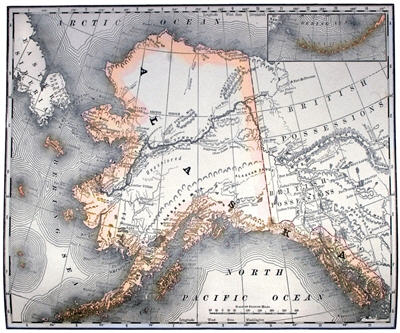
HALIFAX, NOVA SCOTIA–(Marketwire – Jan. 16, 2012) – Ucore Rare Metals Inc (TSX VENTURE:UCU)(OTCQX:UURAF) is pleased to announce results of reconnaissance sampling on the Company’s extensive alluvial rare earths (REE) and tin multi-metal property holdings in the Ray Mountains area of central Alaska (http://ucore.com/projects/ray-mountains-alaska). Sample results from late summer field investigations point to potential economic grade concentrations in at least three drainage basins: the upper Kilolitna River, the Ray River, and No Name Creek. Each of these exhibits numerous surface exposures of alluvial gravel and sand containing a threshold of at least 0.15 kg/cubic meter (0.22 lbs/cubic yard) of REE and/or tin (Sn), along with by-product concentrations of tungsten (W), zirconium (Zr), niobium (Nb), and tantalum (Ta). Locally samples contain up to 1 kg/m3 each of Sn and REE in the extensive floodplain of the Ray River. Mineralized sediments from No Name Creek and the Caribou Heights prospects contain up to 9 kg Sn/m3.
The sampling program has rendered heavy mineral concentrates composed primarily of ilmenite with cassiterite, monazite with lesser xenotime, zircon, wolframite (ferberite end-member), and trace amounts of allanite, scheelite, and yttrofluorite. The concentrates contain up to 50% Sn, up to 10% total REE (TREE), and 0.01 to 1.0% W, Ta, and Nb. Heavy rare earth elements (HREE’s), including Tb, Dy, Er and Y, compose 15 to 25% of the TREE in the majority of samples, with the notable exception of localized areas such as No Name Creek valley, which delivered TREE content comprised of up to 60% HREE’s.
“With the cooperation of the State of Alaska, Ucore continues to expand and advance its rare earth holdings in the most prospective areas of the state” said Jim McKenzie, President and CEO of Ucore. “The intent is to establish Alaska as the leader in American heavy REE exploration, extraction and development. The Ray Mountains project has select areas rivaling HREE content at our Bokan property, and the remarkable advantage of collateral tin, niobium and tantalum mineralization which enhances prospective values per ton. Ucore will be advancing the Ray Mountains area as a priority exploration target as it transitions its Bokan flagship into mine development.”
Most samples collected during the 2011 field program consisted of one or more 5-gallon buckets (0.0133 m3) of material that was later concentrated on a standard shaking table. This procedure achieved an estimated 75 to 80% recovery of heavy minerals including REE-bearing minerals such as monazite and xenotime, thus demonstrating amenability to physical separation in a full scale mine plant. This simple gravity separation method uses only water as the separation medium. Further, extraction technology of REE from a monazite-xenotime placer concentrate is already well known and does not present new metallurgical challenges. The smaller samples were panned by experienced personnel.
Sample details, including original volumes, the recovered weight of heavy mineral, rare metal analyses, and the calculated grams of TREE and Sn per cubic meter can be accessed at http://ucore.com/projects/ray-mountains-alaska. All samples were analyzed by ALS Minerals, Inc. in Vancouver, using lithium metaborate fusion followed by ICP-MS analyses. Overlimit metal concentrations were further assayed by X-ray fluorescence procedures preceded by sample fusion.
The Ray Mountains region of central Alaska features an extensive sheet of alluvial sediments locally 100 m (325 ft) thick. The alluvial deposits, containing concentrations of REE, Sn, W, Zr ± Nb, Ta heavy minerals, are primarily derived from granitic source rock of the Ruby Batholith, and they are most abundant in the lower elevation terrain between the Ray Mountains and the northern Fort Hamlin Hills.
Through a wholly owned operating subsidiary, Ucore holds claims on land selected for its mineral resource potential by the State of Alaska as part of the state’s land entitlement under the 1958 Alaska Statehood Act. Ucore is planning expanded exploration once title transfer is tentatively approved by the federal government.
The Ray Mountain area is accessed by the Dalton Highway from Fairbanks and barge service is seasonally available along the Yukon River connecting directly to the Alaska Railroad freight yard at Nenana.
Background
Ucore Rare Metals Inc. is a well-funded junior exploration company focused on establishing REE, uranium and other rare metal resources through exploration and property acquisition. With multiple projects across North America, Ucore’s primary focus is the 100% owned Bokan – Dotson ridge REE property in Alaska. The Bokan – Dotson ridge REE project is located 60 km southwest of Ketchikan, Alaska and 140 km northwest of Prince Rupert, British Columbia and has direct ocean access to the western seaboard and the Pacific Rim, a significant advantage in expediting mine production and limiting the capital costs associated with mine construction.
The Bokan properties are located in an area reserved for sustainable resource development with an existing road network providing access to the main target areas. REE mineralization at the Bokan-Dotson ridge project occurs in a well-demarcated vein system related to a Mesozoic Bokan peralkaline granitic complex. However, a number of other occurrences of REE mineralization are also located within, or at the margins of the complex. Viewed in a geological and geophysical context, the Bokan complex is a distinctive circular structure and is highly prospective for rare earths deposits.
James C. Barker, P. Geo., has reviewed the technical data relative to the surface sample assays referenced herein and is the qualified person responsible for their accuracy.